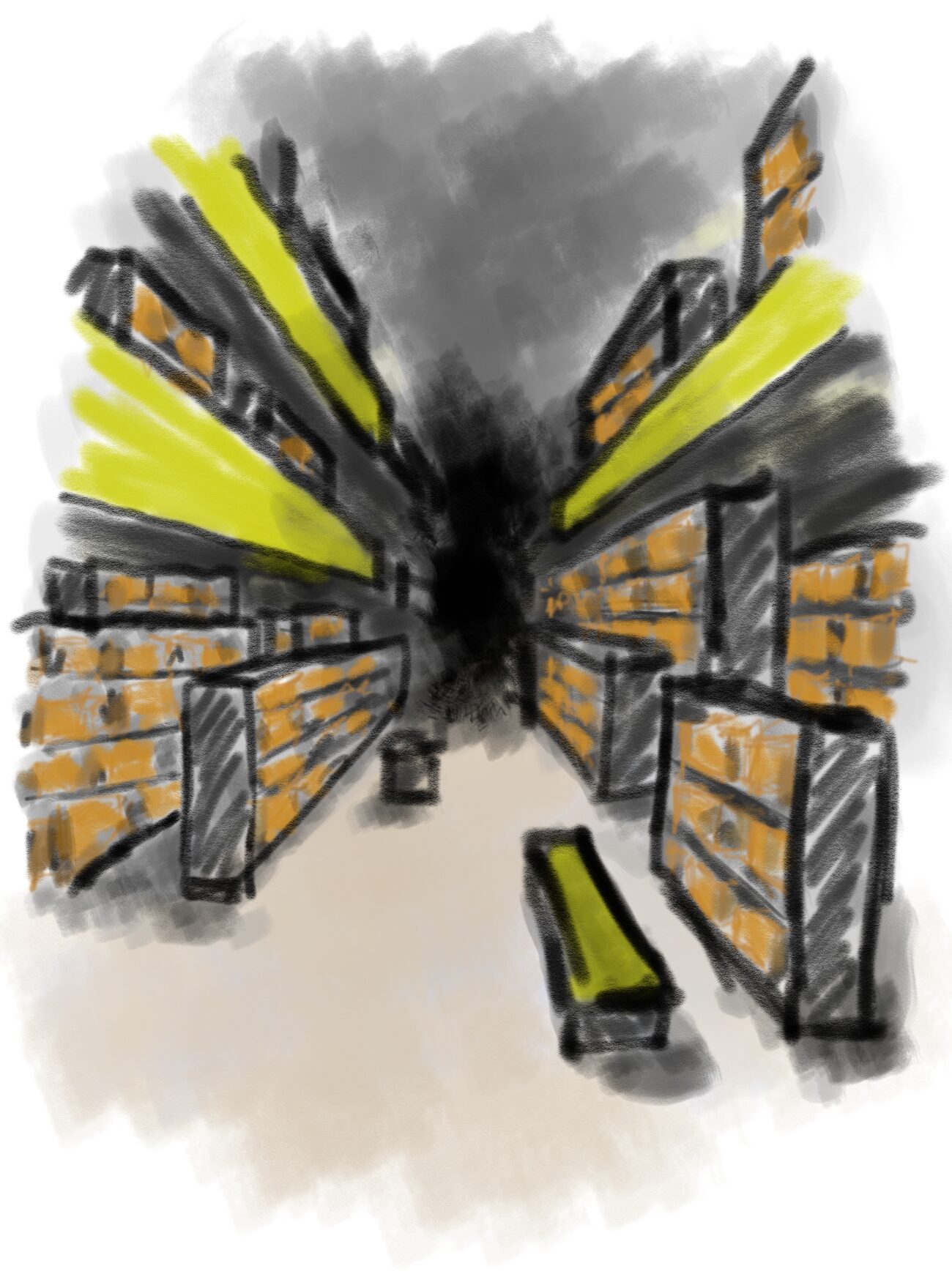The Archives was the fever dream of a second-grader with a box of crayons and an architectural CAD program. It was a library built by M. C. Escher and furnished by Salvador Dali; it defied description and taste and possibly some of the tenets of Euclidean geometry. It was the heart and soul of The Center.
It was also at the end of a long elevator ride, and Noble hated elevators. But the last time he’d taken the stairs he’d accidentally ended up on the wrong end of a line drive in the visitors’ batting cage in the bowels of Fenway Park. This was not an uncommon occurrence; The Center’s headquarters sat within an already complex and confusing underground space, and many of its corridors overlapped with pre-existing parts of Kenmore Square. He didn’t want to risk getting lost—or severely bruised—so the elevator was the only option.
He’d almost had to wait for the next car; Becca had been energetically stabbing the “close” button, but Roger’s foot saved him. Even so, he’d had to sprint the last fifty feet, and he was getting tired of running after closing doors.
The elevator car was normal-looking, with a mixture of wooden panels and mirrors on the sides. Noble had heard that they put mirrors on elevators to give people something to look at, but he chose to fixate on the control panel instead as he gripped the silver metal railing. There were only seven buttons, including the ones to hold the doors open or close them: one for the office level, two more for the research facilities, one for maintenance, and finally, the Archives at the bottom. A very, very far bottom at the very, very far end of a very, very deep shaft.
There was a note where the elevator inspection certificate ought to have been: “Available upon request,” it read. Noble closed his eyes and thought about timing his jump for when the car inevitably hit the very bottom. He knew it wouldn’t do anything to save him from becoming a meat pancake—a human sausage patty on a breakfast sandwich of doom, he thought—but it was an okay distraction.
The elevator hummed and the display showed R1, then R2, then M, and then just a downward arrow for what seemed like an eternity, but was probably somewhere in the range of 20 to 30 seconds. There was a ding and it changed to a large letter A. The doors opened, and he sighed audibly in relief.
His breath caught in his throat. He never quite got used to the sight of the long, twisting hallways branching off in all directions, the ladders and staircases and hidden alcoves and broad chambers with vaulted ceilings lost in the shadows. And then there were the shelves and cabinets packed with boxes and papers and file folders stacked seemingly without end—or any sense of organization. He knew neither was true: the Archives was big and confusing, but finite, and there was a system for finding things.
Nonetheless, he was briefly overwhelmed, and he noticed that Roger stopped suddenly as well. Not Becca, of course. She made a beeline for a nearby terminal, and was already clicking and typing away by the time the two of them shook off their sense of awe long enough to join her.
She acknowledged them by pointing at a set of coordinates on the screen. “The files are here. Come on.” She turned and walked briskly down one of the dimmer passages, leaving Noble and Roger hurrying to keep up. They had just closed the distance when she ducked into a row of shelves; they followed, going up a staircase, left, down another staircase, right, down a hall, right again, right once more, then twice more, then three times, down again, somehow ending up on an upper floor looking down on the entry lobby and the elevator door. Three-quarters of the way down a shelf sat a box.
Quantum Cats – Arbor Day was sharpied in large print on the side of the box. There were other notes as well, including a list of names and dates when someone had signed it out for one reason or another.
Becca gestured at the box and looked at Noble. “It’s your problem,” she said, “so it’s your signature.” She produced a pen from somewhere on her person.
Noble shrugged, then took the pen and added his name and the date to the list. He picked up the box; it was surprisingly light. He’d forgotten how little they actually knew about the entire situation.
“Let’s find a room,” Roger said.
“Down here?” said Noble.
“I figured you’d want to skip another elevator ride,” Roger replied.
“Oh,” said Noble. “Yeah.” He looked around. “Um, do you…”
“Don’t look at me,” Roger said. “I don’t come down here any more often than I absolutely have to. I have no idea where anything is.”
“Come on,” Becca said, rolling her eyes. “You’re both hopeless.” She took off in what seemed like a random direction. Once again, Noble and Roger hurried after her, trying to keep up—and keep from getting lost.
“Do you think we’ll find anything in here that’ll help?” Noble said, mostly out of a desire to fill the silence.
“I certainly hope so,” Roger said. “For your sake.”
Noble tried to laugh, but Roger ignored him, so he gave up on the attempt at conversation. They wound their way through more shelves and hallways until they came to a row of doors. Research Rooms 20-29 read a sign. Becca opened a door marked “23” and they entered; the room was eerily similar to the meeting room on the office floor, including the table and whiteboard.
Noble set the box down and opened the top. “Let’s refresh our memories,” he said, and he began to remove binders and folders full of notes, spreading them out across the table. I was right about how light the box was, he thought. There’s even less here than I remember.
They each chose a small stack of paper, sat down, and began to read. The answers are somewhere in here, Noble thought. They have to be. We’re missing something…something important. We just need to figure out what it is.
…to be continued in Chapter 10…



